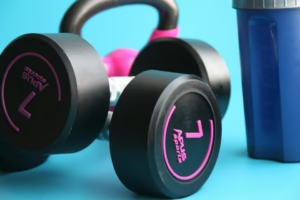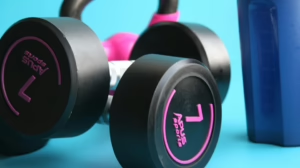Bodybuilding on a Budget: Tips for Effective Training and Nutrition
Introduction: The Myth of Expensive Gains
Bodybuilding, the art and science of sculpting the human physique through targeted training and strategic nutrition, is often perceived as an expensive pursuit. The imagery of lavish protein supplements, specialized equipment, and personalized coaching often overshadows the reality: that significant progress can be made without breaking the bank. While financial resources can certainly accelerate the process and provide access to premium products and services, they are by no means a prerequisite for achieving a strong, muscular, and healthy body. This article aims to debunk the myth of expensive gains and provide a comprehensive guide to bodybuilding on a budget, offering practical tips and actionable strategies for effective training and nutrition that are accessible to individuals with varying financial constraints.
I. Training Smart: Maximizing Efficiency Without Maximizing Spending
The foundation of any successful bodybuilding journey lies in consistent and effective training. While state-of-the-art gyms and specialized equipment can be appealing, they are not essential for building muscle. A well-structured program utilizing fundamental exercises and readily available resources can yield impressive results.
1. Mastering the Fundamentals: The Power of Compound Exercises:
At the core of any budget-friendly bodybuilding program should be a focus on compound exercises. These movements, which engage multiple muscle groups simultaneously, are incredibly efficient for building overall strength and muscle mass. They also stimulate a greater hormonal response, further promoting muscle growth.[modern_footnote_source: Kraemer, W. J., & Ratamess, N. A. (2005). Hormonal responses and adaptations to resistance exercise and training. Sports Medicine, 35(4), 339-361.]
- Squats: Often hailed as the “king” of exercises, squats work the quads, hamstrings, glutes, and core. Variations include back squats, front squats, goblet squats (using a dumbbell or kettlebell), and bodyweight squats.
- Deadlifts: A full-body powerhouse, deadlifts target the posterior chain (back, hamstrings, glutes) and also engage the core, arms, and shoulders. Variations include conventional deadlifts, sumo deadlifts, and Romanian deadlifts.
- Bench Press: The cornerstone of chest training, the bench press works the chest, shoulders, and triceps. Variations include flat bench press, incline bench press, decline bench press, and dumbbell bench press.
- Overhead Press (Shoulder Press): A fundamental shoulder exercise that works the deltoids (front, middle, and rear) and also engages the triceps and upper back. Variations include barbell overhead press, dumbbell overhead press, and Arnold press.
- Rows: Essential for back development, rows work the lats, rhomboids, trapezius, and biceps. Variations include barbell rows, dumbbell rows, chest-supported rows, and cable rows.
By prioritizing these compound exercises, you can effectively target most major muscle groups with a limited number of movements, saving time, energy, and potential gym membership costs.
2. Bodyweight Training: Your Free and Portable Gym:
Bodyweight exercises offer a highly effective and completely free alternative to traditional weightlifting. They can be performed anywhere, requiring no equipment or gym membership. Furthermore, bodyweight training can improve functional strength, balance, and coordination.[modern_footnote_source: Callaghan, M. J. (2005). Role of exercise in functional ability. Best Practice & Research Clinical Rheumatology, 19(6), 945-959.]
- Push-ups: A versatile exercise that targets the chest, shoulders, and triceps. Variations include incline push-ups, decline push-ups, diamond push-ups, and wide-grip push-ups to emphasize different muscle groups.
- Pull-ups/Chin-ups: Excellent for back and biceps development. If you cannot perform full pull-ups, consider using assisted pull-up machines at the gym or employing resistance bands for assistance.
- Dips: Primarily targets the chest and triceps. Can be performed on dip bars at the gym or using two sturdy chairs.
- Lunges: A unilateral exercise that works the quads, hamstrings, and glutes. Variations include forward lunges, reverse lunges, walking lunges, and lateral lunges.
- Plank: An isometric exercise that strengthens the core muscles, improving stability and posture. Variations include forearm plank, side plank, and plank with leg raises.
- Squat Variations: Bodyweight squats, jump squats, pistol squats (advanced).
3. Strategic Gym Membership (If Necessary):
While bodyweight training and home workouts are viable options, a gym membership can provide access to a wider range of equipment and a more motivating environment. However, choose your gym wisely.
- Shop Around: Compare prices and amenities at different gyms in your area. Negotiate for lower rates, especially if you are willing to commit to a longer membership.
- Consider Budget-Friendly Options: Look for gyms that offer basic equipment and fewer amenities, as these are typically cheaper than premium gyms with pools, saunas, and group fitness classes.
- Utilize Free Trials and Day Passes: Take advantage of free trials or day passes to try out different gyms before committing to a membership.
- Time Your Workouts: Gyms are often less crowded during off-peak hours (early mornings, mid-afternoons, late evenings), allowing you to get your workouts done more efficiently.
4. Creative Resistance Training: Beyond Traditional Weights:
Don’t limit yourself to traditional weights. Explore alternative resistance training methods that are both effective and budget-friendly.
- Resistance Bands: Lightweight, portable, and versatile, resistance bands can be used to perform a wide range of exercises, targeting various muscle groups. They are particularly useful for warming up, rehabilitation, and adding resistance to bodyweight exercises. [modern_footnote_source: Page, P., Ellenbecker, T., & LeVeau, B. (2003). Strengthening and stabilizing effects of resistance bands on the shoulder girdle. The American Journal of Sports Medicine, 31(5), 652-660.]
- Sandbags: Easily made at home, sandbags provide a challenging and unstable form of resistance that engages more stabilizing muscles.
- Water Jugs/Milk Jugs: Filled with water or sand, these can be used as makeshift dumbbells or kettlebells.
- Household Items: Be creative! Use canned goods, books, or even filled backpacks to add resistance to your workouts.
5. Optimizing Your Training Program:
Effective training is not just about lifting heavy weights; it’s about strategically planning your workouts to maximize muscle growth and strength gains.
- Progressive Overload: Gradually increase the weight, reps, or sets over time to continually challenge your muscles and stimulate growth. This is the most important principle for building muscle.
- Proper Form: Prioritize proper form over lifting heavy weight. Poor form can lead to injuries and hinder progress. Watch videos, consult with a trainer (even for a short session), and focus on mastering the technique.
- Training Frequency: Train each muscle group 2-3 times per week for optimal muscle growth. [modern_footnote_source: Schoenfeld, B. J., Ogborn, D., & Krieger, J. W. (2016). How many times per week should a muscle be trained to maximize muscle hypertrophy? A systematic review and meta-analysis. Journal of Strength and Conditioning Research, 30(5), 1285-1295.]
- Rest and Recovery: Adequate rest is crucial for muscle growth and recovery. Aim for 7-9 hours of sleep per night and incorporate rest days into your training schedule.
- Track Your Progress: Keep a workout journal to track your weight, reps, and sets. This will help you monitor your progress and identify areas where you need to improve.
II. Nutritional Strategies: Fueling Your Body on a Budget
Nutrition plays a critical role in bodybuilding, providing the building blocks and energy needed for muscle growth and recovery. However, expensive supplements and specialized diets are not essential for achieving your goals. A balanced and strategic approach to nutrition, focusing on whole, unprocessed foods, can be just as effective and significantly more affordable.
1. Prioritize Whole, Unprocessed Foods:
The foundation of a budget-friendly bodybuilding diet should be whole, unprocessed foods. These foods are nutrient-dense, providing essential vitamins, minerals, and macronutrients (protein, carbohydrates, and fats) that are crucial for muscle growth and overall health.
- Lean Protein Sources:
- Chicken Breast/Thighs: A versatile and affordable source of lean protein. Buy in bulk when on sale.
- Eggs: An excellent source of protein, vitamins, and minerals. Relatively inexpensive and highly versatile.
- Canned Tuna/Salmon: A convenient and affordable source of protein and omega-3 fatty acids.
- Legumes (Beans, Lentils, Chickpeas): A plant-based source of protein and fiber. Very affordable and versatile.
- Cottage Cheese: A high-protein, low-fat dairy option.
- Greek Yogurt: Another high-protein, low-fat dairy option.
- Lean Ground Beef: Choose leaner cuts of ground beef to minimize fat intake.
- Complex Carbohydrate Sources:
- Oats: A slow-digesting carbohydrate source that provides sustained energy.
- Brown Rice: A whole-grain carbohydrate source that is rich in fiber.
- Sweet Potatoes: A nutrient-rich carbohydrate source that is also a good source of vitamin A.
- Quinoa: A complete protein and carbohydrate source that is rich in fiber.
- Whole Wheat Bread/Pasta: Choose whole-grain options over refined grains for increased fiber content.
- Healthy Fat Sources:
- Avocados: A good source of healthy monounsaturated fats.
- Nuts and Seeds: Almonds, walnuts, chia seeds, flaxseeds, and pumpkin seeds are all good sources of healthy fats and fiber.
- Olive Oil: A healthy fat source for cooking and dressing salads.
2. Strategic Meal Planning and Preparation:
Meal planning and preparation are essential for staying on track with your nutrition goals and avoiding costly impulse decisions.
- Plan Your Meals in Advance: Take some time each week to plan your meals for the week. This will help you stay organized and ensure that you are consuming the right amount of protein, carbohydrates, and fats.
- Prepare Your Meals in Bulk: Cook large batches of food on the weekends or during your free time. This will save you time and money during the week.
- Pack Your Meals for Work/School: Bring your own meals to work or school to avoid eating out, which can be expensive and often unhealthy.
- Utilize Leftovers: Don’t waste food! Use leftovers for lunch or dinner the next day.
3. Budget-Friendly Protein Sources in Detail:
Protein is paramount for muscle repair and growth. Here’s a deeper dive into affordable protein options:
- Eggs: The Nutritional Powerhouse: Eggs are a complete protein source, meaning they contain all nine essential amino acids. They are also rich in vitamins and minerals, including vitamin D, vitamin B12, and choline. Buy eggs in bulk when they are on sale. Scrambled eggs, omelets, hard-boiled eggs, and fried eggs are all quick and easy ways to incorporate eggs into your diet.
- Canned Tuna/Salmon: Convenience and Omega-3s: Choose tuna canned in water over oil to reduce fat content. Salmon is richer in omega-3 fatty acids, which are beneficial for heart health and inflammation. Use canned tuna/salmon in salads, sandwiches, or pasta dishes.
- Legumes: Plant-Based Protein and Fiber: Beans, lentils, and chickpeas are excellent sources of plant-based protein and fiber. They are also very affordable and versatile. Buy dried legumes in bulk, as they are cheaper than canned legumes. Soak dried legumes overnight before cooking to reduce cooking time and improve digestibility.
- Chicken Thighs: The Underrated Protein Source: While chicken breast is often considered the “go-to” lean protein source, chicken thighs are a more affordable and flavorful alternative. Remove the skin to reduce fat content. Chicken thighs can be baked, grilled, pan-fried, or added to soups and stews.
- Cottage Cheese: Versatile and Protein-Packed: Cottage cheese is a high-protein, low-fat dairy option that can be eaten as a snack or added to meals. Choose low-fat or non-fat varieties to minimize fat intake. Cottage cheese can be eaten plain, mixed with fruit, or used as a topping for salads.
- Ground Turkey: A Lean Alternative: Ground turkey is a leaner alternative to ground beef. Choose ground turkey with a lower fat percentage (e.g., 93% lean) to minimize fat intake. Use ground turkey in tacos, burgers, chili, or pasta sauces.
4. Smart Supplementation (If Necessary):
While a well-rounded diet should provide most of the nutrients you need, certain supplements can be helpful, particularly when on a budget. However, prioritize food first and consider supplements as additions, not replacements.
- Whey Protein (Optional): Whey protein is a convenient and affordable way to supplement your protein intake. However, it is not essential, especially if you are consuming enough protein from whole food sources. Look for sales and buy in bulk.
- Creatine Monohydrate: One of the most well-researched and affordable supplements available. Creatine monohydrate can enhance strength, power, and muscle growth. [modern_footnote_source: Rawson, E. S., & Volek, J. S. (2003). Effects of creatine supplementation and resistance training on muscle strength and weightlifting performance. Journal of Strength and Conditioning Research, 17(4), 822-831.]
- Multivitamin (Optional): A multivitamin can help ensure that you are getting all the essential vitamins and minerals you need, especially if you are restricting calories or have dietary limitations.
- Omega-3 Fatty Acids (Optional): Omega-3 fatty acids are beneficial for heart health, brain function, and inflammation. If you are not consuming enough fatty fish in your diet, consider supplementing with omega-3 fatty acids.
5. Maximizing Your Grocery Budget:
- Shop with a List: Create a grocery list before you go shopping and stick to it. This will help you avoid impulse purchases and stay on track with your budget.
- Buy in Bulk: Purchase non-perishable items in bulk when they are on sale. This can save you a significant amount of money in the long run.
- Compare Prices: Compare prices at different grocery stores and choose the store with the best deals.
- Utilize Coupons and Sales: Take advantage of coupons and sales to save money on your groceries.
- Grow Your Own Food: Consider growing your own fruits and vegetables, even if it’s just a small herb garden. This can save you money and provide you with fresh, healthy produce.
- Reduce Food Waste: Plan your meals carefully and utilize leftovers to reduce food waste. This will save you money and help you be more environmentally conscious.
- Frozen Fruits and Vegetables: Frozen fruits and vegetables are often cheaper than fresh produce and can be just as nutritious. They are also convenient and last longer.
- Buy Seasonal Produce: Seasonal fruits and vegetables are typically cheaper and more flavorful.
III. Sample Budget-Friendly Bodybuilding Meal Plan:
This is a sample meal plan designed to provide approximately 2500-3000 calories, with a focus on affordability and readily available ingredients. Adjust portions based on your individual caloric needs and macronutrient targets.
- Breakfast (approx. 500 calories):
- Oatmeal (1/2 cup dry) with 1 scoop whey protein powder (optional) and 1/4 cup berries (frozen or fresh).
- OR
- Scrambled eggs (3) with 1 slice whole-wheat toast and 1/4 avocado.
- Mid-Morning Snack (approx. 200 calories):
- Greek yogurt (1 cup) with 1/4 cup granola and a small piece of fruit (apple, banana).
- OR
- Handful of almonds (1/4 cup) and an apple.
- Lunch (approx. 600 calories):
- Chicken breast (4 oz) with brown rice (1 cup cooked) and mixed vegetables (1 cup).
- OR
- Tuna salad sandwich on whole-wheat bread (2 slices) with lettuce and tomato, and a side of carrot sticks.
- Mid-Afternoon Snack (approx. 200 calories):
- Cottage cheese (1 cup) with 1/4 cup chopped pineapple.
- OR
- Protein shake (whey protein powder mixed with water or milk).
- Dinner (approx. 700 calories):
- Lean ground beef (4 oz) with sweet potato (1 medium) and steamed broccoli (1 cup).
- OR
- Lentil soup (2 cups) with a side salad (mixed greens, vegetables, and a light vinaigrette dressing).
- Pre-Bed Snack (Optional – approx. 300 calories):
- Casein protein shake (slow-digesting protein – optional but can aid in overnight recovery)
- OR
- Cottage cheese (1 cup).
IV. Maintaining Motivation and Consistency on a Budget:
Bodybuilding requires dedication, discipline, and consistency. Staying motivated and committed to your training and nutrition goals can be challenging, especially when you are on a budget. Here are some tips for maintaining motivation and consistency:
- Set Realistic Goals: Set realistic and achievable goals. Don’t try to do too much too soon. Start small and gradually increase your goals as you progress.
- Find a Training Partner: Having a training partner can help you stay motivated and accountable.
- Join a Community: Join an online or offline community of bodybuilders. This can provide you with support, encouragement, and valuable information.
- Track Your Progress: Keep track of your progress by taking measurements, taking photos, and monitoring your strength gains. This will help you stay motivated and see how far you have come.
- Reward Yourself (Strategically): Reward yourself for achieving your goals. However, avoid rewarding yourself with unhealthy foods. Instead, treat yourself to a new piece of workout gear, a massage, or a relaxing activity.
- Listen to Your Body: Pay attention to your body and don’t push yourself too hard. Rest and recovery are just as important as training.
- Celebrate Small Victories: Acknowledge and celebrate your small victories along the way. This will help you stay motivated and focused on your long-term goals.
- Remember Your “Why”: Remind yourself why you started bodybuilding in the first place. This will help you stay focused and committed, even when things get tough.
- Consistency is Key: Even when you can’t hit the gym or eat perfectly, strive for consistency in your habits. Small, consistent efforts over time will yield significant results.
Conclusion: Building a Better Body and a Healthier Budget
Bodybuilding on a budget is not only possible, but it can also be a rewarding and empowering experience. By focusing on fundamental exercises, utilizing readily available resources, and adopting strategic nutritional practices, you can achieve impressive results without breaking the bank. Remember that consistency, dedication, and a positive mindset are the keys to success. Don’t let financial limitations deter you from pursuing your fitness goals. With careful planning, smart choices, and a commitment to hard work, you can build a better body and a healthier budget simultaneously. Embrace the challenge, be resourceful, and enjoy the journey of transforming your physique and your life. The most important investment you can make is in yourself and your health, and that investment doesn’t require a fortune, just commitment and smart choices. This article has provided you with the tools and knowledge to embark on that journey. Now it’s time to put them into practice.


























Add Comment